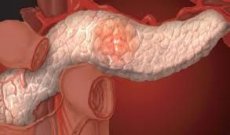New publications
Scientists have moved closer to a complete cure for pancreatic cancer
Last reviewed: 01.07.2025

All iLive content is medically reviewed or fact checked to ensure as much factual accuracy as possible.
We have strict sourcing guidelines and only link to reputable media sites, academic research institutions and, whenever possible, medically peer reviewed studies. Note that the numbers in parentheses ([1], [2], etc.) are clickable links to these studies.
If you feel that any of our content is inaccurate, out-of-date, or otherwise questionable, please select it and press Ctrl + Enter.

By closely analyzing genes expressed by freely circulating tumor cells, scientists have identified a potential target for the treatment of metastatic pancreatic cancer, which is considered one of the most aggressive.
Oncologists from Massachusetts General Hospital (Boston, USA) and their colleagues report that they have discovered an increased level of expression of the WNT2 oncogene in freely circulating cells (FCCs) taken from both mice suffering from pancreatic cancer and people with the same sad diagnosis.
The researchers used a specially designed microfluidic chip to sort out the FCCs from blood samples from GM mice programmed to develop the desired type of cancer. They then compared the genes expressed in the cancer cells circulating freely in the bloodstream with those in the mother tumor. The goal was to identify possible differences in the gene pool that allow malignant cells to enter the bloodstream. The result: several genes were found to be expressed in much higher concentrations by the FCCs.

Among this group of genes, oncologists were particularly interested in WNT2, one of the participants in the signaling pathway that triggers both embryogenesis and cancer. The SCCs, as well as cancer metastases, demonstrated a very high level of WNT2 expression, while this gene was practically not detected in the primary tumor cells (apparently, the exception was precisely those cells that were ready to set sail on a free voyage, joining the orderly ranks of the SCCs). Of course, additional research will be required, but even now we can say with a high degree of certainty that it is WNT2 that allows tumor cells (no, not to bud) to avoid anoikis, one of the mechanisms of the human body by which all foreign cells are removed from the bloodstream. It is clear that when SCCs remain in the blood, their chances of forming metastases increase dramatically.
But the discovery would have remained up in the air, leaving plenty of room for doubt and alternative interpretations, had scientists not identified and tested a substance that blocks WNT2 and thereby inhibits the ability of the CCK to survive in the bloodstream.
Although most of the work was done in mouse models, the researchers found that the same survival mechanism is used by freely circulating pancreatic tumor cells in humans.

 [
[